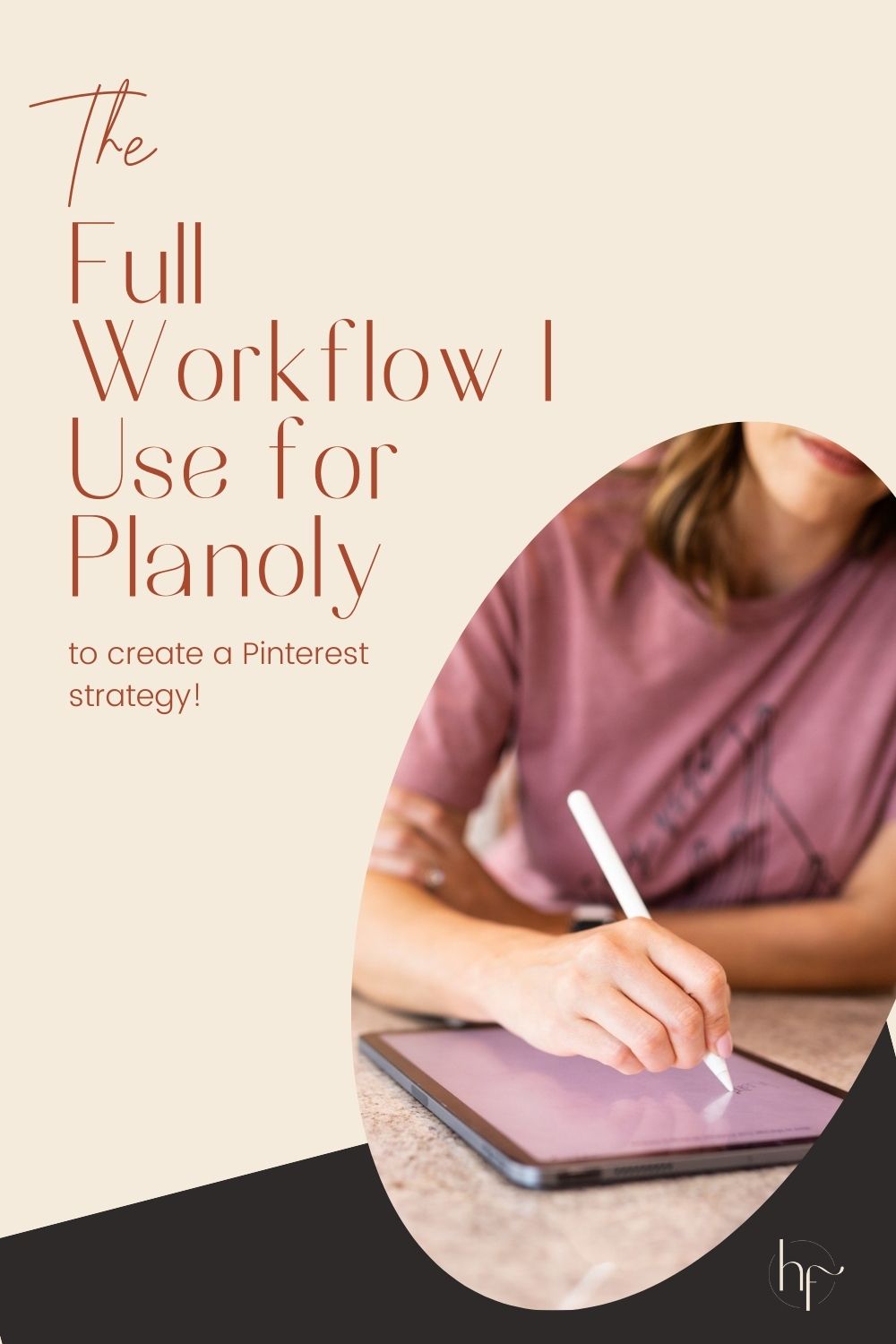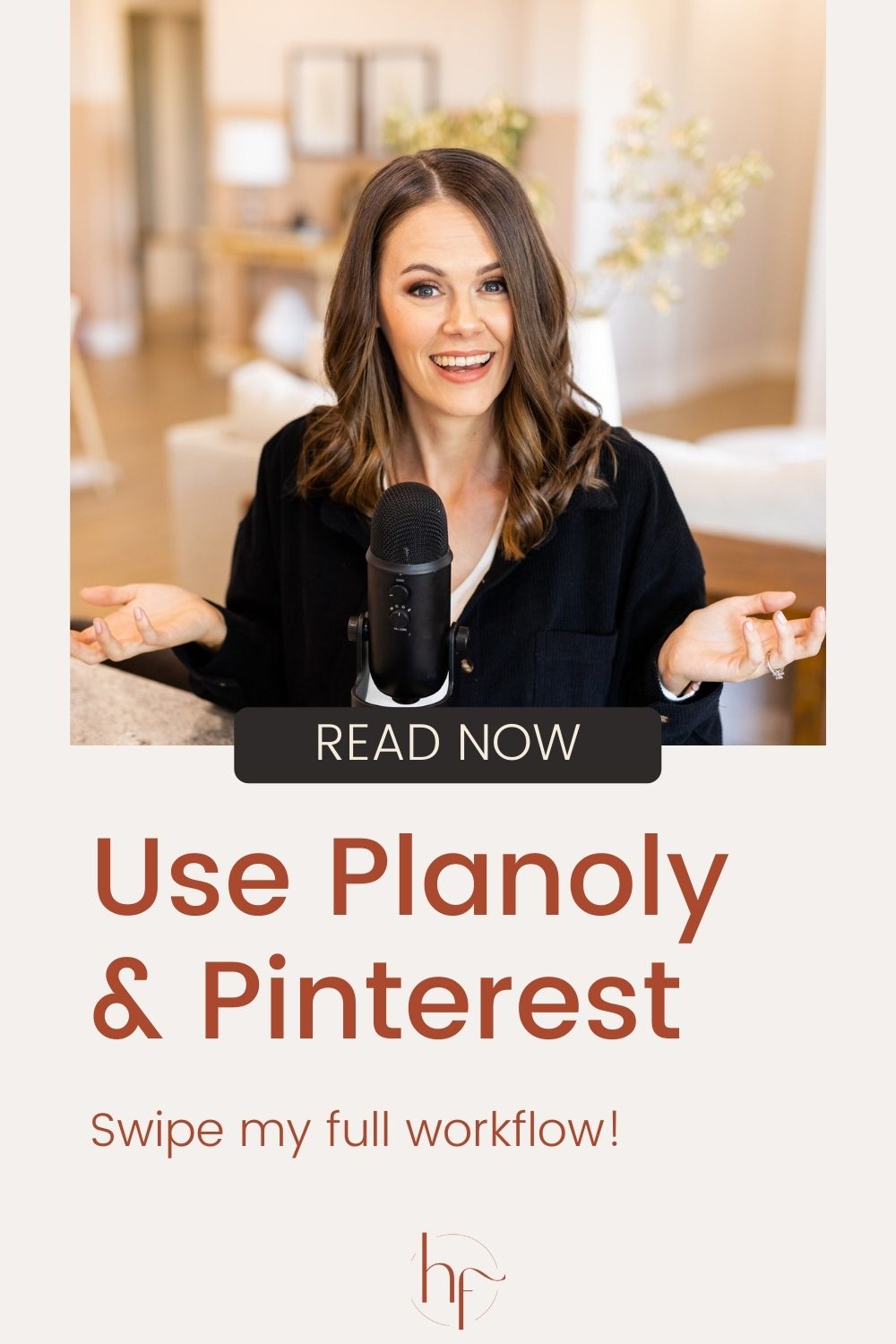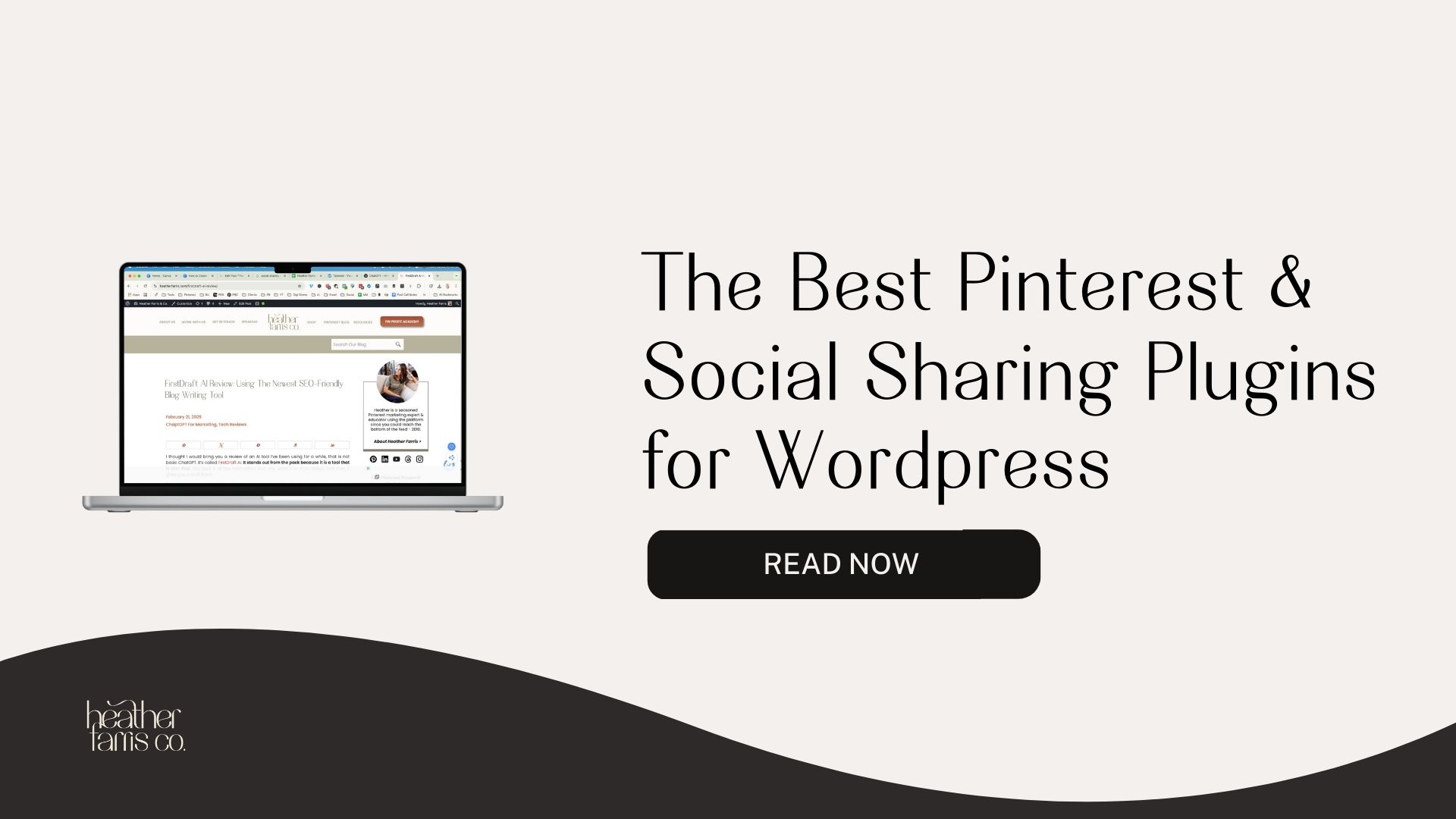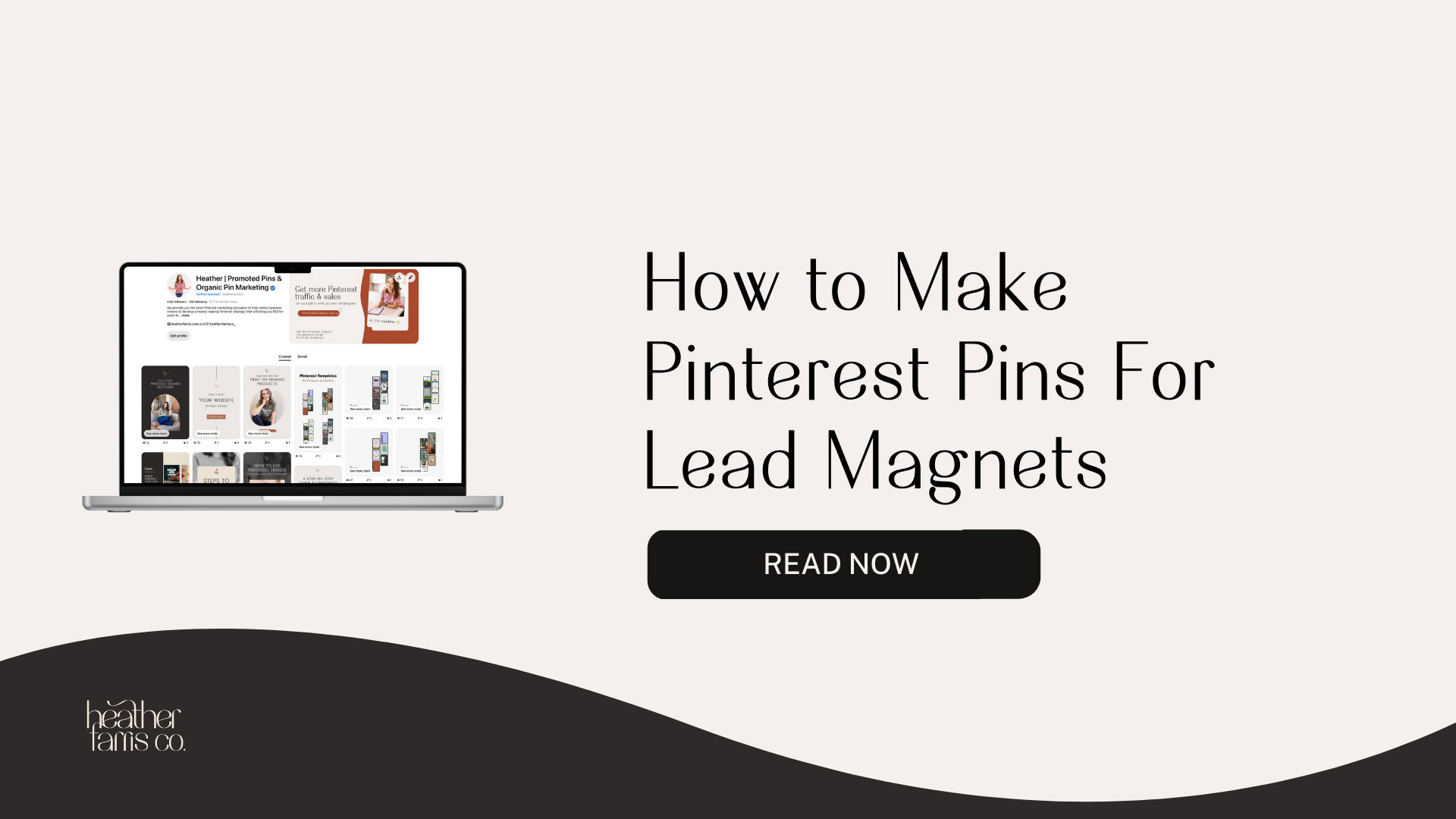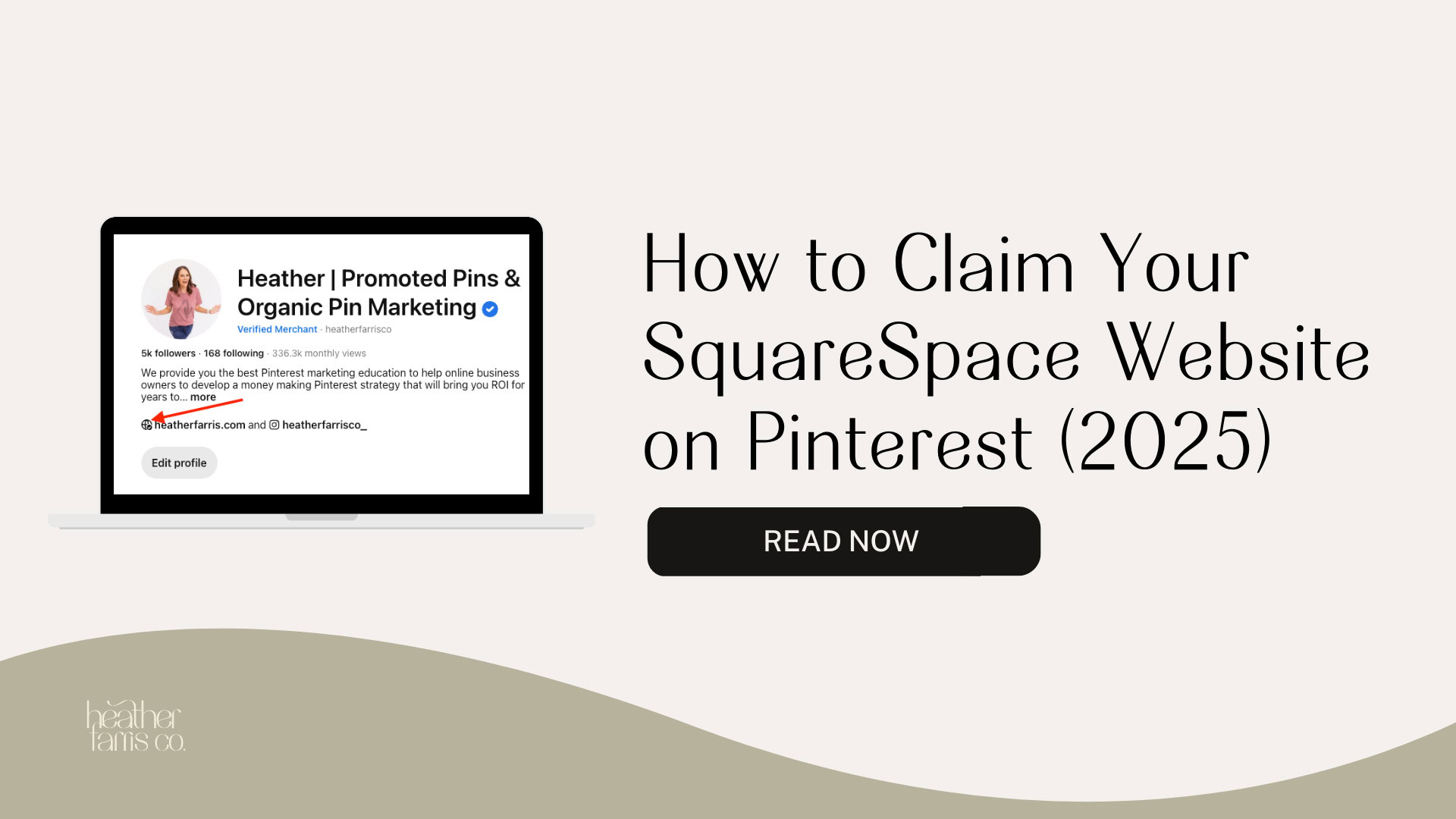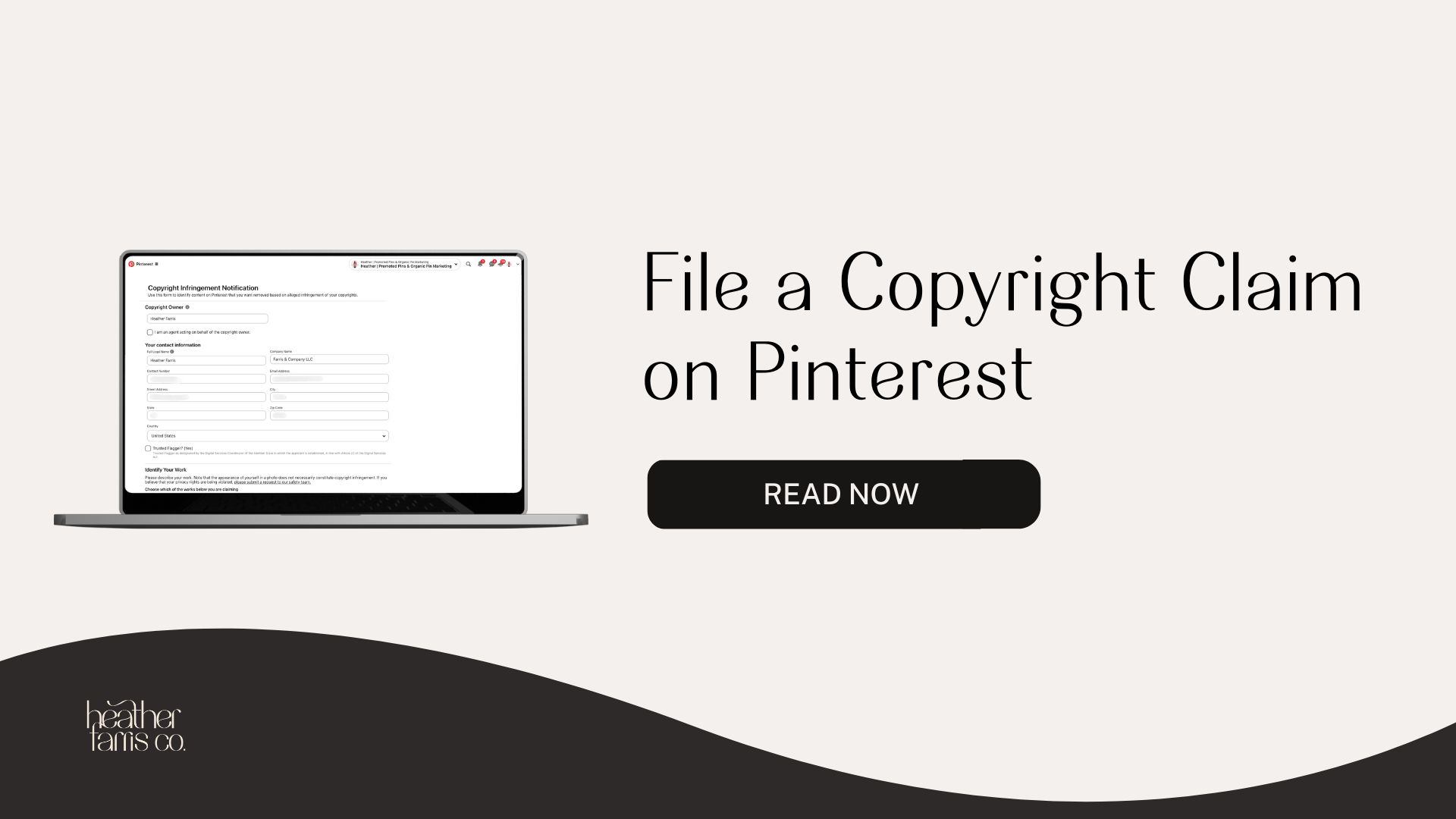Heather is a seasoned
Pinterest marketing expert & educator using the platform since you could reach the bottom of the feed - 2010.
About Heather Farris >
Pinterest Scheduling with Canva and Planoly (My Pinterest System Workflow)
March 15, 2022
Using a new scheduling tool can be exciting and overwhelming, all at the same time. This tutorial is all about Pinterest scheduling with Canva and Planoly inside my Pinterest system. However, you don’t have to have all three of those parts.
Using just Planoly and Canva will help you better schedule and create a Pinterest workflow to be more consistent and continue to show up on Pinterest every day in 2022.
So if you’re here to learn how to use Planoly and Canva, my complete workflow, this tutorial is for you. Let’s get right on into the good stuff. Follow along with the video tutorial at the top of this post.
Ensure Planoly is connected to Pinterest as the first account
First things first, we need to make sure that our Planoly account is connected to Pinterest and you are logged into the correct Canva account on your computer if you want to use the Canva integration from Planoly.
With this integration inside Planoly, all of your templates need to be precisely the way you want them. You cannot access your brand kit inside Planoly once you start creating your content. My Manage Social Accounts has Pinterest and Instagram, with Pinterest being the first one.
It’s important that Pinterest is your first account because you get unlimited posts on this first account. You only get 30 on the second account that you connect.
So now that we have verified that we are logged into Pinterest inside of Planoly, we will click Add to Library. If you want to use the embedded Canva feature, this is how you access that. If you don’t have the correct Canva account linked, this is where it’s going to bring up the wrong one. You are not going to be able to access your brand kit if you’re not happy with your designs.
RELATED: How to Schedule Your Pinterest Pins Using the Canva Content Planner
You can go to styles here. Normally, your brand kit is listed as the top inside of the actual Canva account, but this is almost like a Canva light. So I don’t prefer this feature; I prefer to use the Canva desktop app. I like to open up Canva inside of my computer, outside of Planoly, and then I can go ahead and create.
So I’m going to copy this file because I went ahead and pre-did our text overlays. I’m filming a Tailwind video as well. I’m going to use this copy of these pins, and I’m going to go ahead and open up that file, and then I’m going to rename it.
Batch your content into your lists for the week
All of my content is set up in a workflow inside of ClickUp. It moves from my content plan list to my marketing plan lists and eventually into my picture system.
- So the very first time I create a piece of content, it goes into the content plan.
- When I create a piece of content in here and the outline list, it automatically creates a duplicate task inside my marketing plan list here.
- Then I create a Pinterest image based on the things that are going out that are brand new inside here.
So this is my current 30-day marketing Plan.
After I create pins the first time and mark them complete, I have an automation set up to add a task to the new Pinterest system list.
That’s a lot of stuff going on, but you do not need to be this advanced. I just prefer to have these things over here. This way, I know that once they are on this list, I’ve already created pins for them, which is where the ongoing pin creation will happen.
I batch created all of these tasks, and I went ahead and wrote my titles descriptions, gathered my URLs, and then was ready to create pins.
RELATED: 6 Pinterest Tools I Use as a Pinterest Manager That Won’t Break the Bank
Write all of your titles, descriptions, and prep your URLs
Up to this point, I have done a little leg work that you have not done. So create those lists of pins that you will work on with me and get your title, description, and pin URL completed in your ClickUp list like I have here or in your Pinterest system spreadsheet.
If you want this system, you can join the Academy and grab the whole thing right away. And you can follow along this exact path with me. Or you can create this on your own and still follow along the same path.
Since we already have the basics of our pins completed, I will rebrand these a little bit and make them different colors, and use different images than I am going to use on the Tailwind video. That way, we are not actually duplicating anything. This is where having an optimized set of Pinterest templates is going to be helpful for you.
I created a video on Canva. It is actually a bunch of images I downloaded as an MP4 file and then placed through as a video. They slide through like slides. One of these has a background on it, which is why I can’t change the background of the design.
I have edited all of my pins, and now I am going to add some images. I am actually in a phase of using all of my brand imagery right now because I had really good brand imagery done. These are organized in folders in ClickUp already. I literally have to go in and just grab the ones that I want.
RELATED: How to Use Keywords to Optimize Your Pins on Pinterest
Download your pins and file them into your ClickUp task
From here, all we have to do is download these and put them into our ClickUp list. We are actually not going to put them in our ClickUp list just yet. They do have one video here, so I will have to download all of these as images, except for number 4. So we will choose the MP4 video for number 4 and then download it.
And this is where it would be super amazing if you have used Canva inside of Planoly. But if you want to change the background colors like I did on any of these images and actually make changes to your templates, you are not going to have your brand kit to be able to do that. You don’t even have access to your logos in there. I find that to be a downfall to the Planoly Canva integration.
They would need to open that up and allow you to use the full Canva features inside of Planoly, but obviously, that is not an issue if you open up the app on your computer. Let us now download the rest of these PNG files or JPEGs.
RELATED: How to Create a Blogging Workflow Using Clickup
Batch optimize your pins inside of Planoly
Now, we are going to open up Planoly and pull these images in. This is going to be a zip file, so we are going to need to unzip it. We are going to go to My Computer and upload them into your Library as unscheduled. From here, we have to pull out Pinterest titles and descriptions.
Schedule
Next, we like to select our boards. I am going to do Pinterest Marketing Strategies, and I am going to schedule it for today because I don’t actually have any pins. Then click Save.
I like to schedule one pin per day. You will notice that I am sending the majority of these pins to my own website, and that’s because 20 percent of my YouTube views come from my website and Pinterest prefers claimed domains. So I would prefer to send all of my traffic to my domain versus sending it directly to YouTube because I will capture those views regardless.
So these slots are blank slots. Those are the ones that I added in, and then these are filled in slots so you could see this as a Pinterest image I already scheduled. The last one that we have is the Academy one. Then we need to upload the video.
You don’t get to choose your cover, and that’s kind of a bummer. We’re going to go ahead and schedule this here anyways.
So, that’s how we schedule all of our content.
RELATED: I Tested Pinterest Approved Schedulers So You Don’t Have To
Mark your task complete
One final thing that I would do is actually come here and upload all of the content from my download folder into ClickUp. That way, I will have access to those images next time.
So, I would come in and add all of these images here. I do prefer to have everything in here.
I have my Pinterest system set up so that several weeks after I mark this as done, it is going to come back into the to-do list. This way I know that I need to create content for it again at a later date.
RELATED: 7 Content Marketing Tools to Use in 2021
Final thoughts
So, this is my start to finish Planoly workflow.
- So the very first thing that you’re going to want to do is input your content into your hub wherever you’re keeping that. If you want my Pinterest system, you can grab it in the description below.
- Then write your pin titles and descriptions.
- Batch create your pins.
- Upload them to Planoly.
- Optimize them in Planoly. You’re going to copy and paste everything to optimize them in Planoly from what you pre-wrote.
- Then you’re going to schedule them.
That’s how you create, optimize and put everything into your Planoly schedule from start to finish.
RELATED: I Tested Pinterest Approved Schedulers So You Don’t Have To
You notice that I only scheduled one pin per day, and I have only one going out per day. That is because, in 2022, I am only creating and scheduling one static pin per day. I’m not going to spend any more time creating a ton of static content because the majority of my traffic doesn’t actually come from Pinterest. It comes from Google and YouTube. For me, Pinterest is the third platform that I’m pushing from, but the other two are definitely more vital.
I’m doing a minimum viable strategy on Pinterest this year, putting more focus and emphasis into idea pens and less focus and emphasis on static imagery.
So, that’s how I create my Planoly start to finish workflow.
If you haven’t started using Planoly or Canva, or if you want my Pinterest system, click through and dig into more with these links.
In the meantime, if you’re interested in learning more about Planoly or any of our other scheduling tools and our Pinterest Marketing strategies, head right on over here and watch these videos.
Pin it for later
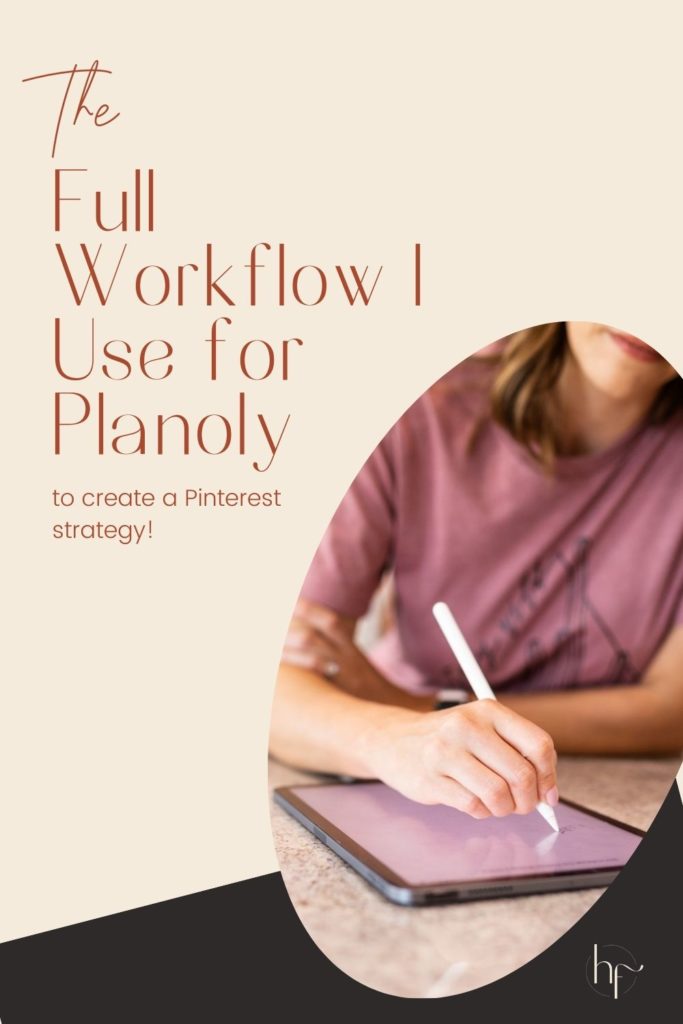
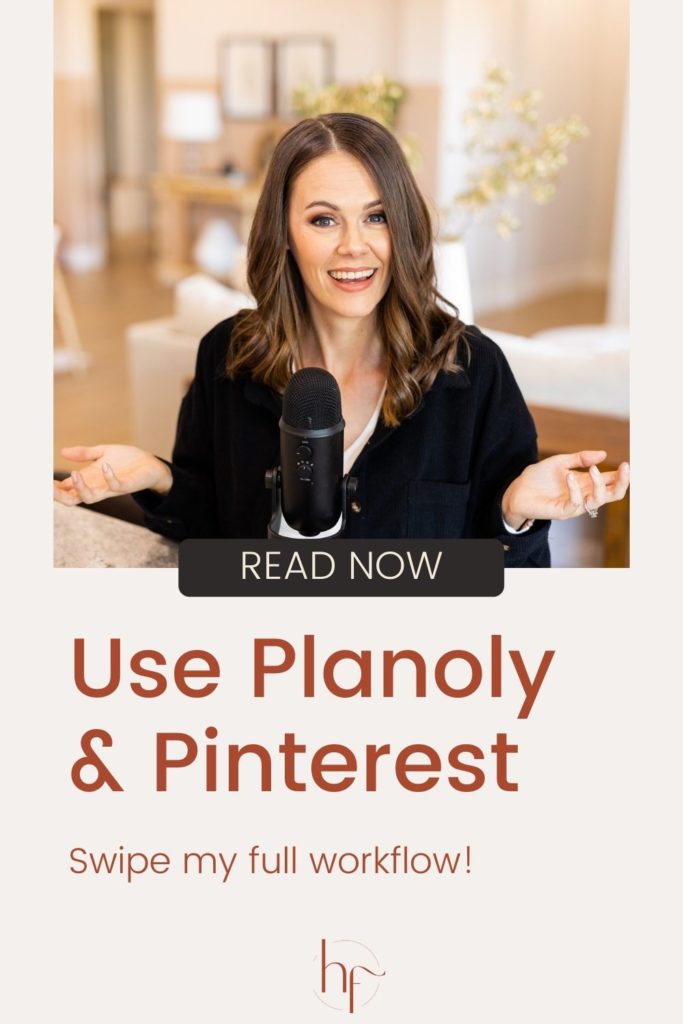
Heather Farris went to school for accounting and worked for years in banking and finance. After finding all of that entirely too boring she started her first blog in her basement in August of 2016. She has started 3 blogs in the marketing, motherhood and travel niches and used Pinterest to grow them all. She quickly became the go-to Pinterest strategist in her peer circles and has been implementing strategies, driving traffic and sales through organic and paid tactics for her clients. On this blog and her YouTube channel, as a renowned Pinterest marketing expert, she educates the public about clear and transparent marketing strategies to help them to grow on Pinterest and in other places online as a renowned Pinterest marketing expert.
